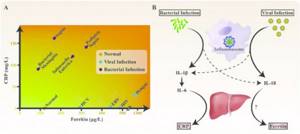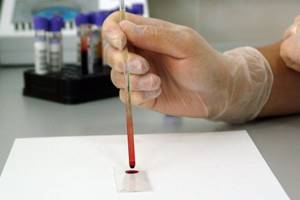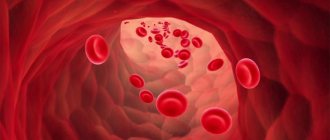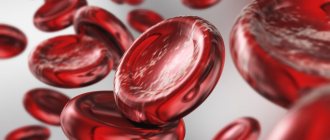Ferritin stores iron and transports it throughout the body to where it is needed. However, ferritin, as a protein complex, is also involved in inflammatory responses during infections, systemic inflammation and malignant tumors. Elevated ferritin levels are common in chronic inflammatory conditions such as obesity, metabolic syndrome, and diabetes. Why it is important to maintain this protein in balance, and what factors increase or decrease ferritin levels, you can find out in this article.
The article is based on the findings of 47 scientific studies
The article quotes authors such as:
- Wake Forest University Health Sciences, Medical Center, Boulevard, USA
- School of Health Sciences, SET Portfolio, RMIT University, Melbourne, Australia
- Proteomics of Iron Metabolism Unit, Dibit, San Raffaele Scientific Institute, Milan, Italy
Attention! All articles on the site are for informational purposes only. Before using any techniques or recommendations, be sure to consult with your doctor or specialist .
What is ferritin?
Ferritin is a protein complex that stores iron in a soluble, non-toxic form and transports it to those areas of our body where it is needed at a given time. ()
Iron plays many important roles in our bodies: it helps make red blood cells and is needed for energy production in muscle and heart cells. But iron can also be toxic to cells due to its ability to generate reactive substances that can damage DNA and proteins. Ferritin traps and buffers excess iron within cells , which reduces cellular iron levels and promotes cellular health. ()
When iron becomes scarce, the body begins to use the iron trapped in ferritin. And then the ferritin level decreases. In this case, the decrease in ferritin begins long before the onset of iron deficiency.
Two major cellular pathways for iron (Fe) uptake, namely transferrin (Tf) coupled Fe uptake and non-Tf coupled Fe uptake (source)
Low ferritin levels indicate that the body's iron stores are insufficient. Higher ferritin levels , on the other hand, may indicate that you have a condition that causes the body to store too much iron. ()
Elevated ferritin levels
If ferritin levels are elevated, then iron is in excess or an acute inflammatory reaction has occurred , in which ferritin is mobilized into the blood without excess iron.
Ferritin also increases under oxidative stress. It is enhanced by antioxidant responsive element (ARE). ()
Ferritin, in turn, can increase of inflammatory mediators IL-1b, iNOS, RANTES, IkappaBa and ICAM1 in the liver ()
Because ferritin is also an acute-phase reactant of inflammation (part of the body's response), it is often elevated in various diseases. Ferritin levels greater than 1000 μg/L are a nonspecific marker of diseases, including infections and cancer. ()
However, even ferritin a little more than 300 mcg/l may indicate some inflammation in the body. Inflammatory cytokines stimulate the production of ferritin, which acts as an acute phase reactant in relation to inflammation or infection. ()
Circulating ferritin production is enhanced by the cytokines interleukin IL-1β and tumor necrosis factor-alpha (TNF-α). ()

by varying levels of ferritin and C-reactive protein in the blood (source)
Viral infections are typically characterized by high plasma ferritin with concomitant low levels of circulating C-reactive protein (CRP). While bacterial infections are usually characterized by high levels of CRP in the blood. The production of inflammatory interleukin IL-1β/IL-6 in response to bacterial infections promotes elevated CRP levels, while viral infections are characterized by increased interleukin IL-18 culminating in excessive ferritin levels.
It is important to note that IL-1/IL-6/CRP and IL-18/ferritin levels do not fully reflect the duality of bacterial-viral infection, as some bacterial infections are known to increase IL-18 levels in the blood, and viral infections are known to , can also increase IL-1β levels. ()
Why and when do we lack iron?
When the balance between the intake of a microelement into the body and its consumption is disturbed, which may be a consequence of the development of certain diseases/conditions.
Causes
* Bleeding, incl. constant hidden/chronic (from the gastrointestinal tract) and heavy menstrual periods.
* Iron enters the body with food in insufficient quantities - for example, vegetarianism, unbalanced diet, dietary restrictions in case of illness (diet).
* Iron absorption is reduced due to impaired absorption in the gastrointestinal tract: inflammatory, scarring/atrophic processes in the small intestine (nutrition is disrupted, the mucous membrane becomes thinner), removal of part of the small intestine.
* Hormonal changes (thyroid dysfunction).
* Physiological processes in which the need for iron is higher: in a child during periods of intensive growth, during pregnancy and breastfeeding.

Why does ferritin increase during inflammation?
During infection, elevated ferritin levels represent an important host defense mechanism that deprives bacteria of iron and protects immune cells. (, )
Ferritin may also be protective, limiting free radical production and mediating immunomodulation. In addition, elevated ferritin levels are one of the key acute phase participants used by physicians as an indication for initiating treatment for inflammation in high-risk patients.
Studies have shown that iron supplementation during infection increases mortality , and decreased iron levels and elevated serum ferritin are often found in patients with high pathogen titers. ()
Hepatocytes (liver parenchyma cells), Kupffer cells (liver macrophages), renal proximal tubular cells, and macrophages have been shown to secrete ferritin under various body conditions. () In experiments on cells, it was found that cells released ferritin when exposed to the inflammatory cytokines IL-1β and TNF-α. ()
For example, active secretion of ferritin by macrophages is observed in the bronchi of smokers (bronchoalveolar lavage fluid) during pulmonary inflammation associated with smoking. ()

General scheme of inflammation (source)
In addition, elevated ferritin levels often correlate with biomarkers of cell damage, with biomarkers of hydroxyl radical formation (and oxidative stress), and with the presence and/or severity of numerous diseases. All this suggests that ferritin levels in the blood often represent a consequence of cellular stress and damage . ()
Diseases with elevated ferritin
The most common causes of elevated ferritin levels are obesity , inflammation , and daily alcohol intake . The most common cause of genetically determined elevated ferritin levels is the condition of hemochromatosis. Additional causes include diabetes mellitus and metabolic syndrome. (, )
Circulating ferritin in the blood is recognized as an acute phase reactant and a marker of severe and chronic inflammation. It is elevated in a significant number of inflammatory conditions, including chronic kidney disease, rheumatoid arthritis and other autoimmune diseases, acute infections, and malignancies. ()
Elevated ferritin in these conditions reflects increased total body iron stores, but paradoxically these stores are reduced and are not available for red blood cell production. This contributes to the development of anemia of chronic disease (ACD). ()
It should be noted that although ferritin levels generally increase during infections, some infectious diseases can lead to a decrease in ferritin. ()
Diseases in which ferritin levels increase:
- Inflammation ()
- Chronic kidney disease ()
- Rheumatoid arthritis ()
- Autoimmune diseases ()
- Infections ()
- Cancer ()
- Anemia of chronic disease ACD ()
- Diabetes mellitus type 2 ()
- Metabolic syndrome ()
- Atherosclerosis ()
- Fatty liver disease ()
- Anorexia ()
- Graves' disease ()
- Arrhythmias ()
- Hepatitis C ()
- Hemochromatosis ()
- Hemophagocytic syndrome ()
- Sideroblastic anemia ()
Hemochromatosis
Ferritin is used as an indicator of iron overload in the body in diseases such as hemochromatosis or hemosiderosis. Hemochromatosis is a disorder in which too much iron accumulates in your body.
Typically, your intestines absorb only the right amount of iron from the foods you eat. But with hemochromatosis, your body absorbs too much iron and has no way to get rid of it. Thus, the body begins to store excess iron in the joints and organs such as the liver, heart and pancreas. This harms the body. If left untreated, hemochromatosis can lead to organ failure.
However, a number of other health conditions can also cause iron levels to rise:
- Hyperthyroidism
- Iron poisoning
- Cancer: leukemia, lymphoma or breast cancer
- Liver disease
- Recent blood transfusion
Alcohol intake
Alcohol enhances iron absorption . Alcohol consumption is very strongly associated with high ferritin levels. () A positive relationship was found between wine intake and the concentrations of both ferritin and iron in the blood. ()
Ferritin levels increase during alcohol abuse and decrease rapidly during alcohol withdrawal syndrome when alcohol is stopped. ()
Smoking
Women who smoke have higher levels of ferritin and iron in their bodies compared to non-smokers. However, when women smoke during pregnancy, their newborn babies show lower iron stores than those of non-smoking mothers. ()
Tobacco smoking was associated with elevated ferritin concentrations in patients with Parkinson's disease (under these conditions, smoking had a beneficial effect in these patients). ()
Complexes with this research
Vegetarians and vegans Metabolism control when refusing animal products RUB 3,750 Composition
Blue blood Assessment of iron deficiency and the efficiency of the iron metabolism mechanism RUB 2,310 Composition
Advanced male anti-aging diagnostics Advanced monitoring of key indicators in men aged 40+ RUB 24,320 Composition
IN OTHER COMPLEXES
- Women's anti-aging diagnostics RUB 7,860
- Anti-aging diagnostics in postmenopause RUB 8,260
- Advanced anti-aging diagnostics in postmenopause RUR 21,000
- Advanced women's anti-aging diagnostics RUB 20,600
- Monitoring the diet of a nursing mother RUB 1,960
Ways to reduce ferritin
It is important to discuss the situation with your doctor if the test shows elevated ferritin. Your doctor should identify the cause of the elevated ferritin and prescribe treatment.
You may also try the additional actions listed below if you have discussed them and agreed with your doctor, provided that such actions may be appropriate for reducing ferritin levels in your case. Remember that none of the additional options for lowering ferritin should be used instead of the recommendations and prescriptions of a doctor.
Diet for hemochromatosis
Hemochromatosis is a common cause of elevated ferritin levels. People with this condition absorb too much iron from food without utilizing the iron, causing iron levels in the blood to rise excessively.
In general, the optimal diet for people with hemochromatosis is to have a low iron diet .
Ferritin: normal levels
Various diseases or certain physiological processes can affect ferritin levels. Natural reasons for decreased performance include:
- periodic female bleeding;
- pregnancy;
- dieting.
To monitor health status as a preventive measure, as well as in case of symptoms typical of iron deficiency, a biochemical blood test for ferritin is performed. The collected biomaterial is examined to understand how many micrograms of iron are contained in one liter of plasma.
The norms for each age group are different:
- in newborns from 25 to 600 mcg/l;
- in children older than 28 days, but not yet 9 weeks of age, the norm is 20-600 mcg/l;
- in children from 2 to 5 months it should be from 50 to 200 mcg/l;
- children aged from six months to one year should have from 70 to 140 mcg/l;
- girls and women over 12 years of age should have a normal level of 22 to 180 mcg/l;
- boys and men over 12 years old - from 30 to 310 mcg/l.
Women's blood contains less ferritin because it contains less hemoglobin, red blood cells and iron molecules. In addition, pregnancy makes its own adjustments to ferritin levels:
- in the first trimester of pregnancy, levels can reach 90 mcg/l;
- in the second trimester, blood contains up to 74 mcg/l;
- and the third trimester is famous for its low ferritin level - only 10-15 mcg/l.








